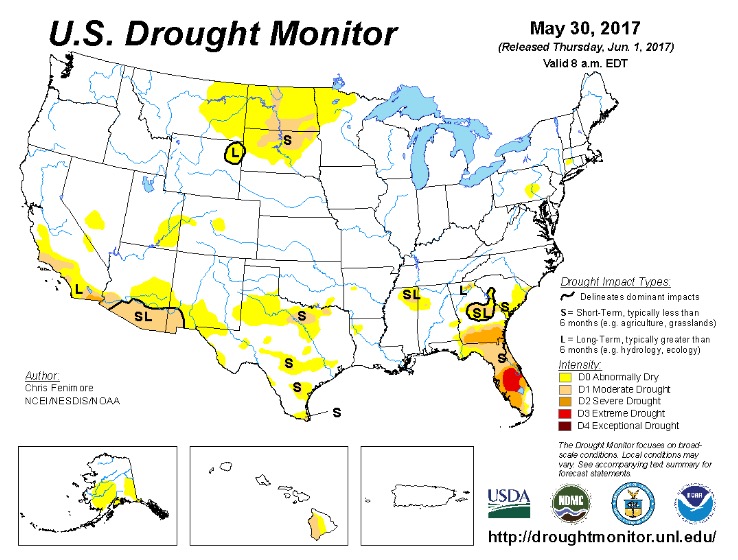Last updated on 2017-06-03
I’m listening to the interim nonmeandered waters committee meeting from the Capitol via SDPB this morning. I notice that the agenda includes eight draft bills (including the one I analyzed last week, Draft #46 in today’s agenda packet) and two amendments.
The core conflict over nonmeandered waters—ponds and lakes that have formed from historically recent rains and runoff but are not recognized in the original 19th-century survey of South Dakota’s waters—is the right of landowners to control access to their inundated and otherwise useless lands versus all the right of the public to use all that water, which South Dakota law recognizes as the property of all the people of South Dakota. Let people fish and boat and swim in their water, and they are playing around over private land. Let landowners ban fishers and boaters and swimmers from their flooded land, and the state is letting them privatize all that public property (including the yummy fishies therein).
All eight drafts appear to tilt toward private property rights over public access to water. But Draft #51 offers a radical solution: it tells the state that, when it comes to all that water we own, move it or lose it.
Draft #51 Section 2 says, “No public trust water shall be placed on the real property of any owner of private property, without the consent of the owner.” That section doesn’t stop the rain from falling and the creeks from overflowing, but it does seem to open up the possibility that an aggrieved landowner could complain about landowners upstream installing drain tile and moving water off their land and onto hers.
But the really radical proposal comes in Section 3:
The owner of private property underlying any nonmeandered lake may, by written notice to the department with a copy to the attorney general, demand that the state remove any public trust waters overlying the owner’s private property. Within thirty days after receipt of demand from the owner, the state shall remove all public trust waters from the owner’s private property. The failure of the state to remove public trust waters from the owner’s private property within thirty days shall transfer ownership of the public trust waters to the record owner of the private property underlying the nonmeandered lake [Draft #51, proposed to interim committee on nonmeandered waters, South Dakota Legislature, 2017.06.01].
Wow! Now there’s a solution! All that water inundating farm fields is public property right now. Pass Draft #51, and landowners can petition the state for relief in the form of removing all that water from their land. The state has 30 days to mobilize pumps, trucks, pipes, canals, whatever it takes to move all that unwelcome water to Richmond Lake or Lake Kampeska or any place friendlier. (Hey! How about some droughted stock ponds and reservoirs in the northern half of the state?) And if the state doesn’t act (and just how much water could the state move in 30 days?), it forfeits its ownership of that water to the private landowner. The conflict disappears.
Now imagine if instead of creating a mostly impractical mechanism for the public to preserve its property right to that water, we drafted a bill in the other direction. Suppose the state said to landowners, “Hey! You’ve got a bunch of land under our water. Sure, you claim to own that land, but you’re not doing anything with it. We’re giving you thirty days to do something with that land—plant rice, mine for gravel or gold, whatever. If you don’t do anything with that land in thirty days, we tear up your deed and deem your land public property.” Pitchforks!
Draft #51 is likely a provocation to debate, not a proposal that stands a chance of being passed. But more than any other proposed legislation on today’s agenda, Draft #51 directly and neatly resolves the core conflict of rights in the nonmeandered waters issue.
Tangentially Related: Really, we’ve got drought! According to the U.S. Drought Monitor at the University of Nebraska–Lincoln, as of Tuesday, much of northern South Dakota is either “Abnormally Dry” or in “Moderate Drought”:

Those are still the least severe drought categories, but one should never take water or its abundance or ownership lightly.
It is extremely hard to be civil and think rationally and reasonably in the face of all this absurdity and down right mindless problem solving; or, in the instant case, the complete lack of it. Is there even one, responsible, civic minded law maker that can comprehend much less endorse the “public trust” principle. I believe the SD Supreme Court said that this legislature is responsible for promulgating rules in this matter that “best serve the PUBLIC interest. Thus far, it appears that people who craft bills that require the state to move water or lose it have significant problems with reading comprehension.
I read the bill and had about the same response. Just think of the logistics involved in moving that much water from point A to points unknown. Not even thinking of the total cost.
I believe you are right, this bill was to spur debate rather than a proposal. This has been a favorite way to get a topic in front of the legislature for them to discuss.
Still, I look at this and was totally floored.